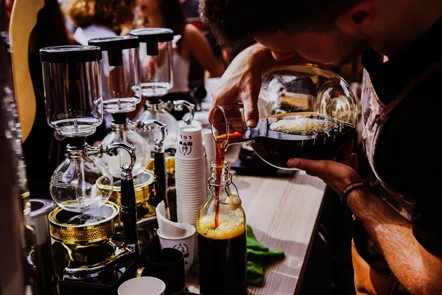
The person who prepared the coffee was called a barman, until the word barista was coined under the reign of Mussolini. The name was first used in 1645 when there were places in Italy that would serve both – alcohol and coffee. The baristas used the Traditional Turkish method where they would serve coffee from a copper pot to each patron.
By the 17th century, coffee had made its way to Europe and was becoming popular across the continent. But coffee brewing was a slow process and, as it is still the case today, customers often had to wait for their brew. As the popularity of the drink grew so did the need for technologies that could reduce brewing time.
Though there were surely innumerable patents and prototypes, the invention of the machine and the method that would lead to espresso is generally attributed to Angelo Moriondo of Turin, Italy. Angelo was granted a patent in 1884 for “new steam machinery for the economic and instantaneous confection of coffee beverage.”
The cylindrical device featured a boiler with water level and steam pressure indications, as well as a safety valve and a quick-mount handle. It could rapidly produce one or more cups of coffee “in the presence of the public”.

The invention of this technology was a breakthrough that established a new wave for coffee houses. Major companies started to open shops all over the country to make coffee easily available and uniform.
Many argue that the wave took away the skills and craftsmanship of the baristas that they learned with their title. But being a barista is much more than the assumed context that – the baristas are button-pushers, hipsters, slackers, aloof, caffeine-crazed, or just working in the coffee houses until they can find something better.
The talent of the barista is as important as the quality of the beans and the efficiency of the machine. Indeed, it is said, that a good espresso depends on the four M’s: Macchina, the espresso machine; Macinazione, the proper grinding of beans – a uniform grind between fine and powdery – which is done moments before brewing the drink; Miscellas, the coffee blend and the roast, and Mano is the skilled hands of the barista.
Because even with the finest beans and the most advanced equipment, each shot depends on the unique touch and style of the barista. When combined properly, the four Ms makes a drink that is at once bold and elegant, with a light, sweet foam crema floating over the coffee.
Several coffee shops encourage each barista to showcase how talented they are with the use of manual machines. Due to the popularity of the coffee and the skills required to make an excellent cup of espresso, there are national competitions and world championships held annually across the globe.